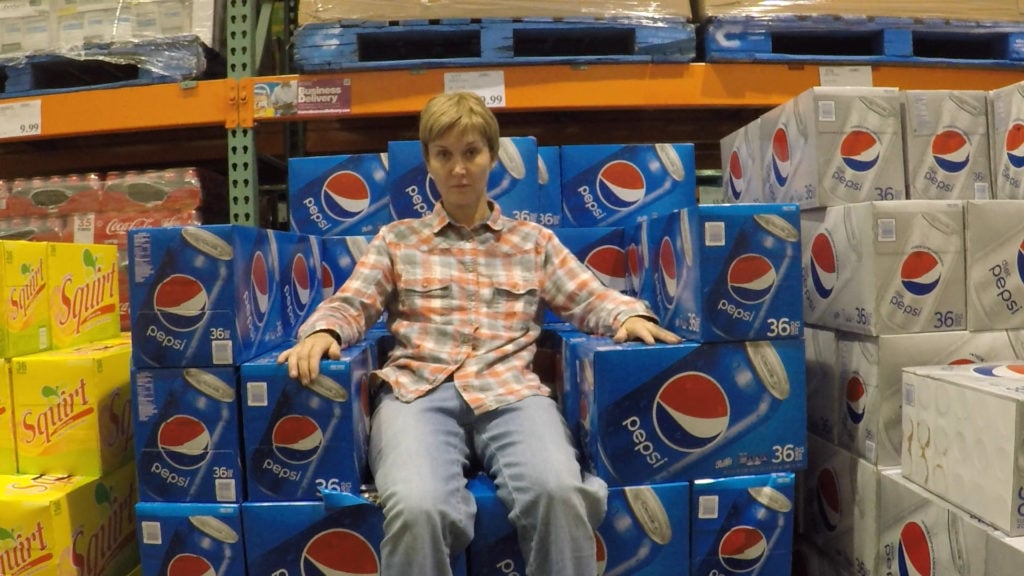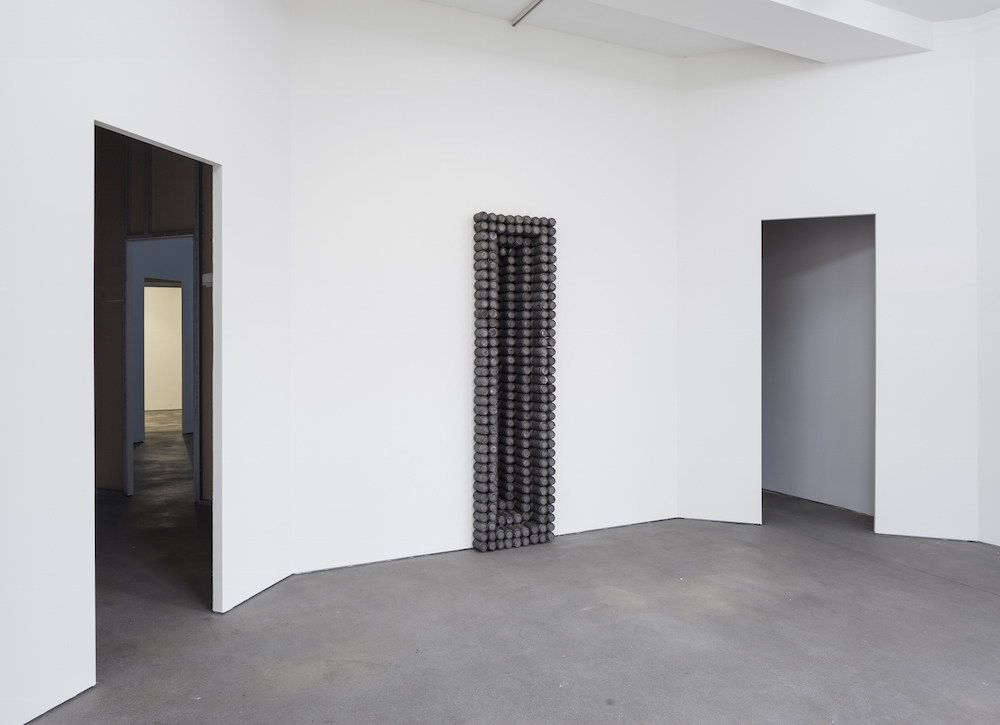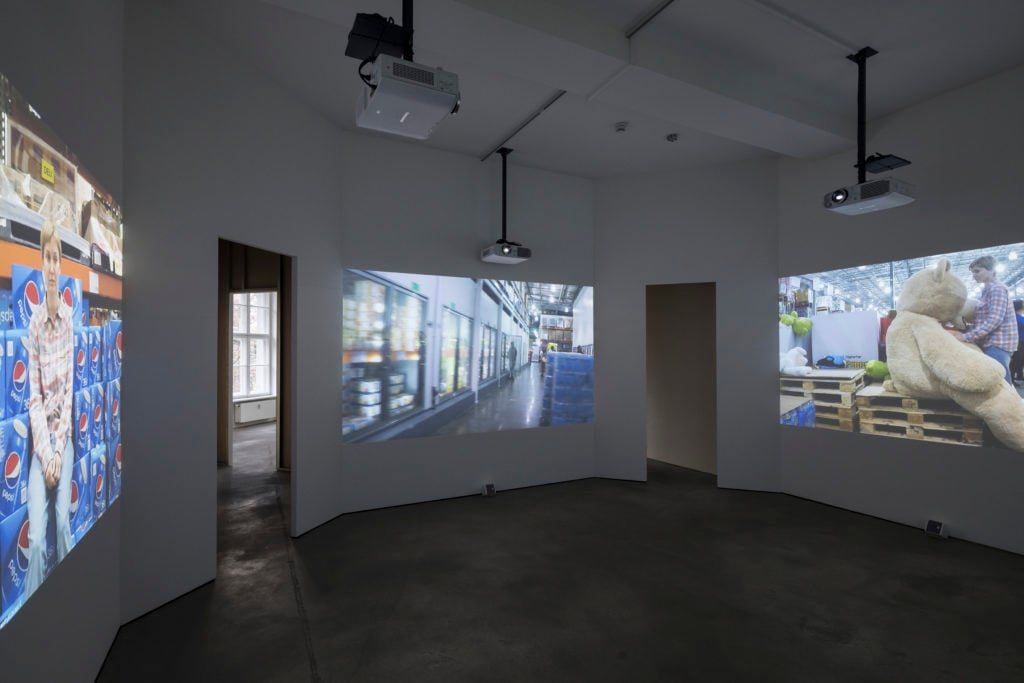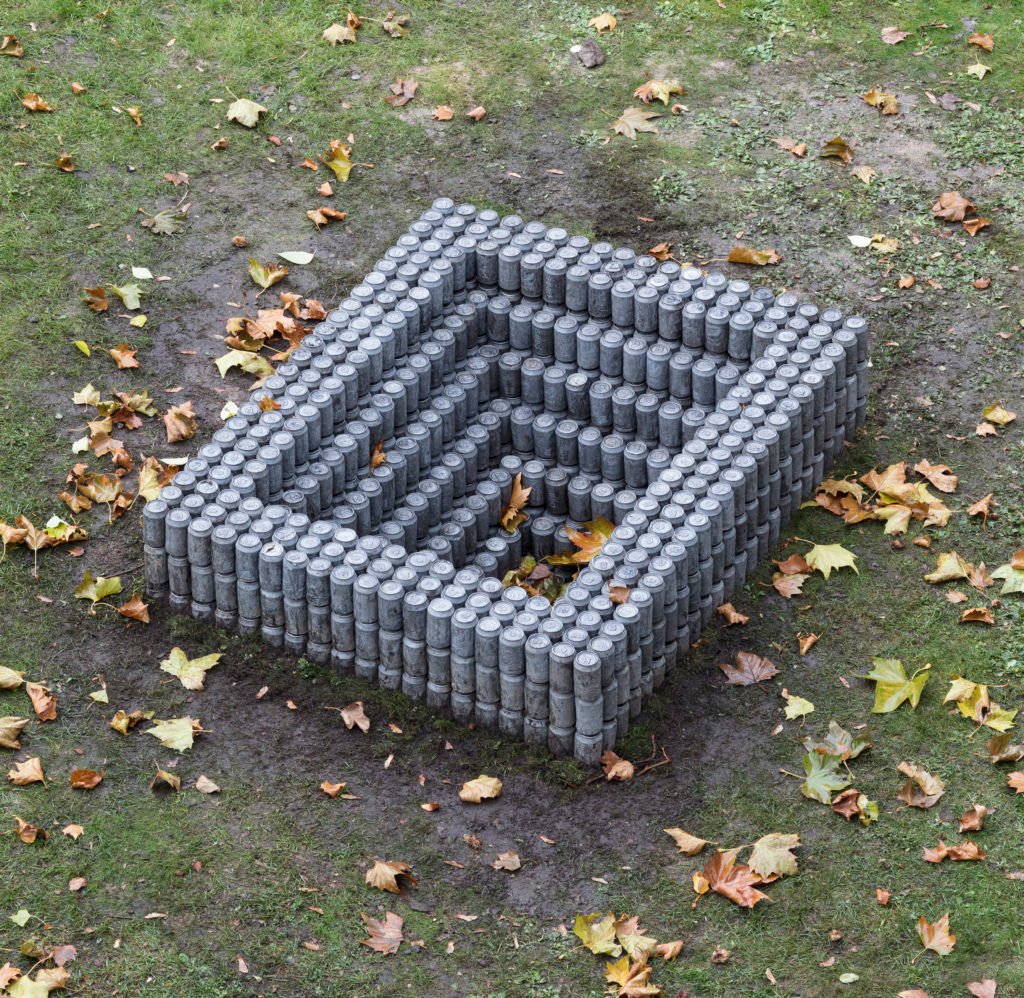Reviews
Meet Kaari Upson, the Artist Whose Mom Loved Pepsi Too Much
And what does Joan Crawford have to do with it?

And what does Joan Crawford have to do with it?

Hili Perlson

Kaari Upson is about to have a busy 2017. Her first solo show with Sprüth Magers at the gallery’s Berlin branch, titled “MMDP (My Mother Drinks Pepsi),” runs through mid-January, closing just two months before the 2017 Whitney Biennial, where her work will also be included. Then, in May, the New Museum in New York will feature a solo show by the Los Angeles-based artist, occupying its third floor gallery.
In a practice that spans painting, sculpture, video, and artist books, Upson’s work is anything but easy: she goes for raw emotions and open wounds—ones that would otherwise never heal—and tackles them with open-ended narratives that meld fantasy and trauma.
In her current exhibition in Berlin, Upson is showing a series of videos and sculptures, started in 2014, that stand for her uneasy feelings towards her mother. The show’s title sets the premise: one of the artist’s strongest memories is of her mother’s daily ritual of enjoying a can of Pepsi, and uttering a sigh of pleasure.
Sculptures made of fossilized Pepsi cans define the viewer’s movement through space and create doorways. The cans look charred, as if dug out from the remnants of a fire (the artist creates them by pouring aluminum into the cans, so that container and content amalgamate, burning off the can’s colors from the inside). Installed in the gallery’s upper level room, a door leads into a black box with multiple screens. Projected on them is the four-channel video installation Recluse Brown (2015-16), in which we see the artist in a wig and simple unisex clothing wandering through the fully-stocked aisles of a Costco, or lying fully clothed in the stream of a river. In one scene, she builds a throne out of boxes of Pepsi, and sits in it.

Kaari Upson, MMDP II (vertical slit) (2016). Installation view at Sprüth Magers, Berlin ©Kaari Upson. Courtesy Sprüth Magers.
Two doors lead the viewer out of the black box, and into a nearly-empty space with a towering, vertical Pepsi-can sculpture that appears carved into the wall, like a gateway into the unknown. Looking out to the courtyard from the gallery’s second floor windows, a similar, but this time horizontal and tomb-like, Pepsi-can sculpture is dug into the ground.
Here, Upson goes headlong into the mix of feelings that a daughter can have towards her mother; it’s a universal notion that involves fascination, alienation, tenderness, repulsion, and guilt. Her exploration is of course personal, and takes the mother’s sigh of joy after drinking Pepsi as a point of departure. Too sensuous, the eroticism of the mother’s sigh provoked strong reactions that the artist describes as misophonia, the hatred and disgust elicited by the memory of certain sounds.
“To bring it to music is a good starting point,” Upson told artnet News in an email. “The sound she made isn’t important and it can’t be written phonetically…. It was an attempt to communicate externally her internal joy or satisfaction; it was projected out, and it needed an audience…. I found it elicited a feeling of distance and disgust in me at a young age.”

Kaari Upson, Recluse Brown, (2015/2016). Installation view at Sprüth Magers, Berlin. ©Kaari Upson. Courtesy Sprüth Magers
“The cans are a fossilized echo of the distance and disgust covering the original repetitious sound she made at 4 p.m. every day,” she adds.
The exhibition is accompanied by an artist book that holds the key to the mother’s love for Pepsi-Cola and shopping at strip malls: Upson’s mother wrote a memoir, which is printed here along with the artist’s sketches and designs for the sculptures, as well as notes she scribbled on Post-its commenting on passages in her mom’s life story. The memoir starts with a charting of her family in Germany, between the two world wars, before she was born. The tone is descriptive and does not reveal any emotional value attached to any of the scenes described, even when those involve graphic memories of injury and death.
We learn that the mother, who was sent on weight gaining trips as a post-war child, escaped from East Germany as a young adult and came to America, where she found the American Dream come true in the form of abundance, capitalism, and buying in bulk.

Kaari Upson, My Mom Drinks Pepsi II, (2015). Installation view at Sprüth Magers, Berlin ©Kaari Upson. Courtesy Sprüth Magers
The mother’s memoir includes an anecdote about her own mother, the artist’s grandmother, who scrubbed the floor just before giving birth to her. Next to it, Upson scribbled a remark about her mother’s Aryan upbringing.
“The whole thing sums up the washing away and cleaning up trauma,” Upson told artnet News.
In the publication, Upson also included some of her research into the history of Pepsi. A curious detail comes up, which seems to perfectly tie in with her narrative of trauma and alienation. In the 1950s, Hollywood actress Joan Crawford married Al Steele, the CEO of Pepsi-Cola. “When Al died of a heart attack, she became the first woman appointed to the board of directors,” Upson explains.
“She promoted Pepsi. She made ads and super-8 films inside grocery stores walking around with walls of Pepsi behind her as she pushed a cart talking to a little girl (not her own; she’s past middle age here). She is [asking] where food comes from…many times the answer is ‘God.’ It feels like an existential nightmare. Of course, Joan Crawford has also culturally accrued the title as ‘Worst Mom Ever’ because of her daughter’s exposé of abuse in Mommie Dearest (1981). All these issues combined set the tone of the work.”
Kaari Upson, “MMDP,” is on view at Sprüth Magers, Berlin, from November 22 2016 – 14 January 2017.